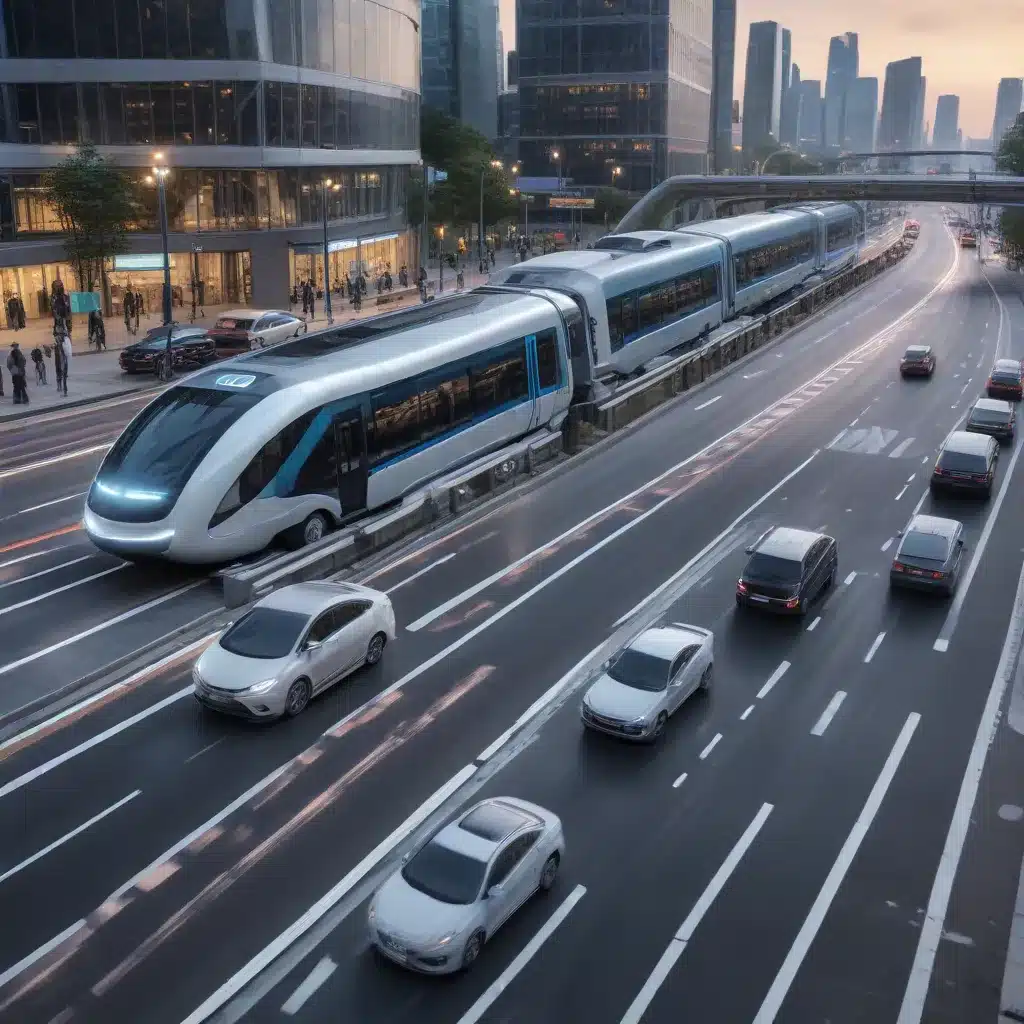
The Dawn of Autonomous Vehicles
In the ever-evolving landscape of transportation, a transformative shift is underway – the rise of autonomous vehicles (AVs). These self-driving cars represent a paradigm-altering breakthrough, leveraging an intricate blend of advanced sensors, cameras, radar systems, and cutting-edge artificial intelligence (AI) algorithms to navigate urban environments without human intervention.
The promise of AVs extends far beyond the convenience of hands-free driving. These vehicles hold the potential to drastically reduce the number of accidents caused by human error, distraction, fatigue, or impaired driving. By enhancing road safety, AVs can revolutionize the way we commute and travel, ushering in a new era of transportation marked by enhanced efficiency and improved quality of life for all.
Expanding the Smart Mobility Ecosystem
While autonomous vehicles are at the forefront of this transportation revolution, they are merely one component of a broader, interconnected ecosystem known as “Smart Mobility.” This comprehensive approach to urban transportation encompasses a diverse array of innovative solutions, from ride-sharing platforms and electric scooters to advanced public transit systems.
The overarching goal of the Smart Mobility ecosystem is to create a seamlessly integrated transportation network that addresses the multifaceted challenges of modern cities, including congestion, environmental sustainability, and accessibility. By leveraging the power of connected technologies, such as the Internet of Things (IoT) and real-time data analytics, Smart Mobility solutions aim to optimize traffic flow, reduce carbon footprints, and provide inclusive transportation options for all.
Unlocking the Benefits of Autonomous Vehicles and Smart Mobility
The convergence of autonomous vehicles and Smart Mobility solutions promises to unlock a myriad of benefits that can transform the way we experience urban transportation. These advantages span across several key areas:
Enhanced Safety
The elimination of human error through the integration of advanced sensors and AI-driven decision-making processes in autonomous vehicles can significantly reduce the likelihood of accidents, making our roads safer for all users.
Improved Traffic Efficiency
The coordinated communication between vehicles and intelligent infrastructure, facilitated by the IoT, enables dynamic route planning, reduced congestion, and optimized traffic flow – leading to a more efficient transportation ecosystem.
Environmental Sustainability
The shift towards electric and shared mobility solutions, as part of the Smart Mobility framework, contributes to the reduction of greenhouse gas emissions, aligning with global efforts to address climate change and promote sustainable urban development.
Increased Accessibility and Inclusivity
Autonomous vehicles, in particular, hold the potential to provide newfound independence and mobility for individuals with limited mobility, seniors, and people with disabilities, fostering a more inclusive and equitable transportation system.
Real-World Deployments and Initiatives
The transformative potential of autonomous vehicles and Smart Mobility solutions is not just theoretical; it is already being realized in various real-world deployments and initiatives around the world.
Waymo’s AV Pilot in Phoenix, Arizona
Waymo, a subsidiary of Alphabet Inc., has been operating an ongoing AV pilot program in the city of Phoenix, Arizona, allowing residents to experience fully autonomous rides in their everyday lives. This real-world deployment showcases the feasibility and potential impact of AVs in urban environments.
Singapore’s Smart Mobility Initiatives
As a global leader in Smart Mobility, the city-state of Singapore has integrated autonomous vehicles, electric vehicles, and an efficient public transportation system as part of its broader “Smart Nation” vision. This comprehensive approach serves as a model for other cities exploring similar innovative transportation solutions.
Navigating the Road Ahead: Challenges and Considerations
While the benefits of autonomous vehicles and Smart Mobility solutions are undeniably promising, the journey towards their widespread adoption and integration is not without its challenges. Navigating the road ahead requires addressing a range of complex issues, including:
Cybersecurity Concerns
The interconnected nature of autonomous vehicles and Smart Mobility systems raises critical cybersecurity concerns, as any vulnerabilities could have catastrophic consequences. Ensuring the robust protection of these systems against cyber threats is paramount.
Regulatory Frameworks
The development of comprehensive and adaptable regulatory frameworks is essential to ensure the safe and responsible deployment of autonomous vehicles and Smart Mobility solutions, balancing innovation with public safety.
Public Acceptance
Gaining widespread public acceptance and trust in these emerging technologies is crucial for their successful integration into our daily lives. Addressing concerns related to safety, privacy, and ethical decision-making will be vital.
The Future Landscape: Toward Connected and Autonomous Cities
The transformative journey of autonomous vehicles and Smart Mobility extends beyond individual technological advancements; it sets the stage for the development of connected and autonomous cities. In this vision, urban infrastructure and transportation systems seamlessly integrate, with smart intersections communicating with AVs and integrated mobility platforms orchestrating a symphony of transportation modes.
This future landscape promises to be more livable, sustainable, and efficient, redefining the way we experience and interact with our cities. As the pace of technological innovation continues to accelerate, the path towards connected and autonomous cities is paved with both challenges and immense potential, shaping the future of urban mobility.
Conclusion: A Transformative Journey Ahead
Autonomous vehicles and Smart Mobility solutions are not merely technological advancements; they represent a fundamental shift in the urban transportation paradigm. As cities worldwide embrace these innovations, the vision of safer, more efficient, and sustainable urban mobility inches closer to reality.
The road ahead involves not only overcoming technical and logistical hurdles but also fostering collaborative efforts between the public and private sectors to ensure the equitable distribution of the benefits of these technologies. The future of urban transportation is smart, connected, and autonomous, and the journey has only just begun – a journey that promises to redefine how we move, connect, and thrive in the cities of tomorrow.
To stay up-to-date with the latest trends and developments in the world of https://itfix.org.uk/, be sure to visit our website and explore our comprehensive library of informative articles.












